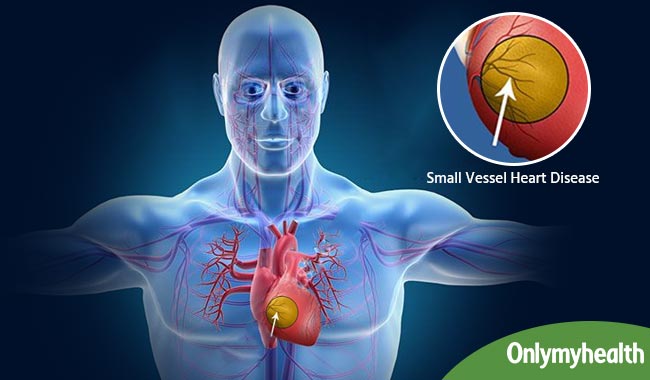
Coronary microvascular disease (MVD) is heart disease that affects the heart's smallest coronary arteries. Coronary MVD occurs in the heart's tiny arteries if the walls of the arteries are damaged or diseased.
Coronary MVD is different than traditional coronary heart disease (CHD). In CHD, a fatty substance called plaque builds up in the large coronary arteries. This buildup can lead to blockages that reduce or block the flow of oxygen-rich blood to the heart muscle. In coronary MVD, however, the heart's smallest arteries are affected. Plaque doesn't create blockages in these vessels, as it does in CHD.
Studies have shown that women are more likely than men to have coronary MVD. Many researchers think that a drop in estrogen levels in women during menopause combined with traditional risk factors for heart disease causes coronary MVD.
Both men and women who have coronary MVD often have diabetes or high blood pressure. Some people who have coronary MVD may have inherited heart muscle diseases.

The same risk factors that cause atherosclerosis may cause coronary MVD. These include unhealthy cholesterol levels, high blood pressure, smoking, insulin resistance, diabetes, overweight and obesity, lack of physical activity, unhealthy diet, age, and family history of early heart disease.
Coronary MVD also may be linked to low estrogen levels occurring before or after menopause. In addition, the disease may be linked to anemia or conditions that affect blood clotting.
The signs and symptoms of coronary MVD often differ from those of traditional CHD. Many women who have coronary MVD have angina (chest pain). However, it may not be “typical” angina. In coronary MVD, the chest pain usually lasts longer than 10 minutes, and it can last longer than 30 minutes. Also, coronary MVD symptoms often are first noticed during routine activities instead of during physical activity.
Your doctor will diagnose coronary MVD based on your medical history, a physical exam, and the results from tests. Diagnosing coronary MVD can be a challenge. Standard tests for CHD don't always detect coronary MVD. As a result, women often are thought to be at low risk for heart disease.
Your doctor may ask you to fill out a questionnaire called the Duke Activity Status Index (DASI). The results give your doctor information about how well blood is flowing through your coronary arteries.
If test results show that you don't have traditional CHD, you can still be diagnosed with coronary MVD if evidence shows that not enough oxygen is reaching the small arteries in your heart.
One of the main goals of treating coronary MVD is to relieve pain. Treatments also are used to control risk factors and other symptoms. Coronary MVD is treated with medicines.
No specific studies have been done on how to prevent coronary MVD. It's not yet known how or in what way preventing coronary MVD differs from preventing CHD.
People can take steps to delay or prevent CHD by making lifestyle changes and getting ongoing care. Lifestyle changes include following a healthy diet, losing weight (if needed), doing physical activity regularly, quitting smoking, and learning how to manage stress.
If you already have coronary MVD, you can take steps to stop it from getting worse. These are the same steps used to prevent CHD (adopting a healthy lifestyle and getting ongoing care).
If you have symptoms of heart disease, know how and when to seek medical help. Be able to describe your symptoms, and know how to control them. Know which medicines you take and how to take them. Finally, know the limits of your physical activity and how to avoid or cope with stress.
Coronary MVD, like traditional CHD, increases your risk of a heart attack. If you have signs and symptoms of a heart attack for more than 5 minutes, you should call 9–1–1. These signs and symptoms may include chest pain, upper body discomfort, shortness of breath, and nausea (feeling sick to your stomach).
Research is ongoing to learn more about coronary MVD and how to diagnose it. Studies also are under way to learn more about the causes of coronary MVD, how to treat the disease, and its outcomes.
Read more articles on Coronary Microvascular Disease.
For more such articles, Download OnlymyHealth App.
Read Next
What is Postural Hypotension?
How we keep this article up to date:
We work with experts and keep a close eye on the latest in health and wellness. Whenever there is a new research or helpful information, we update our articles with accurate and useful advice.
Current Version
